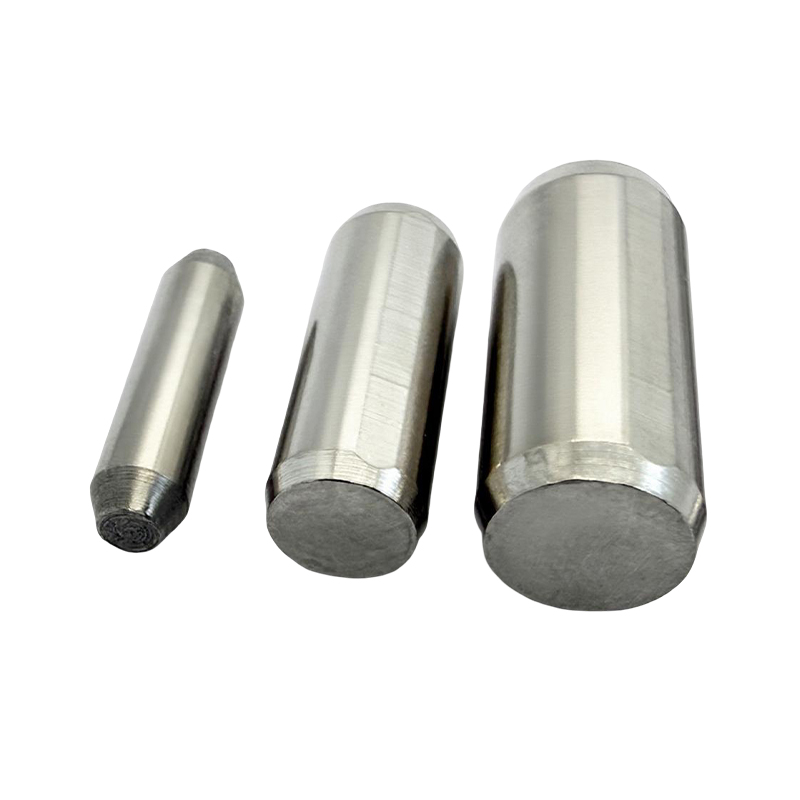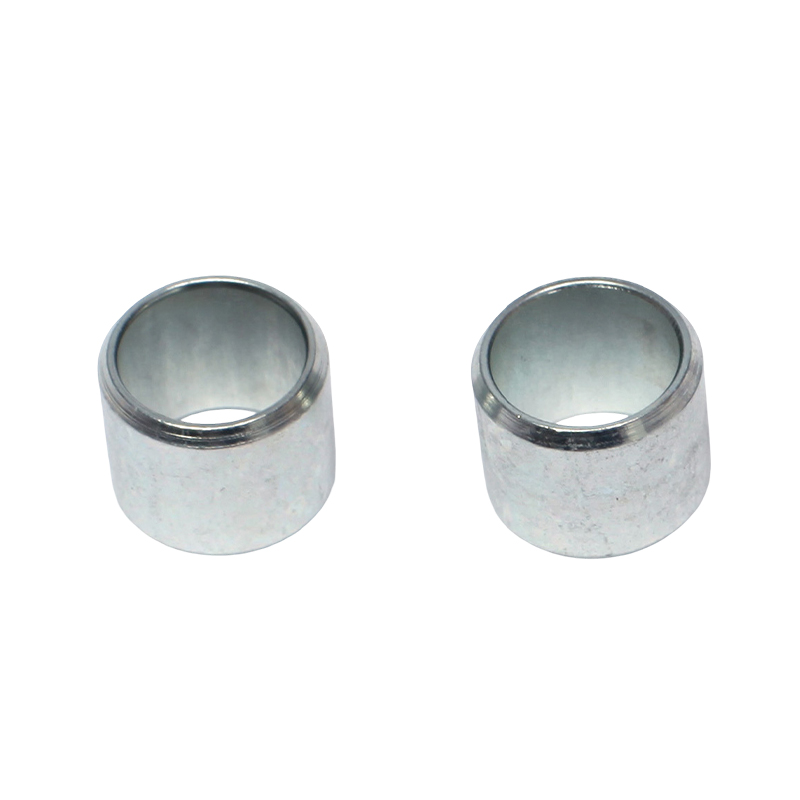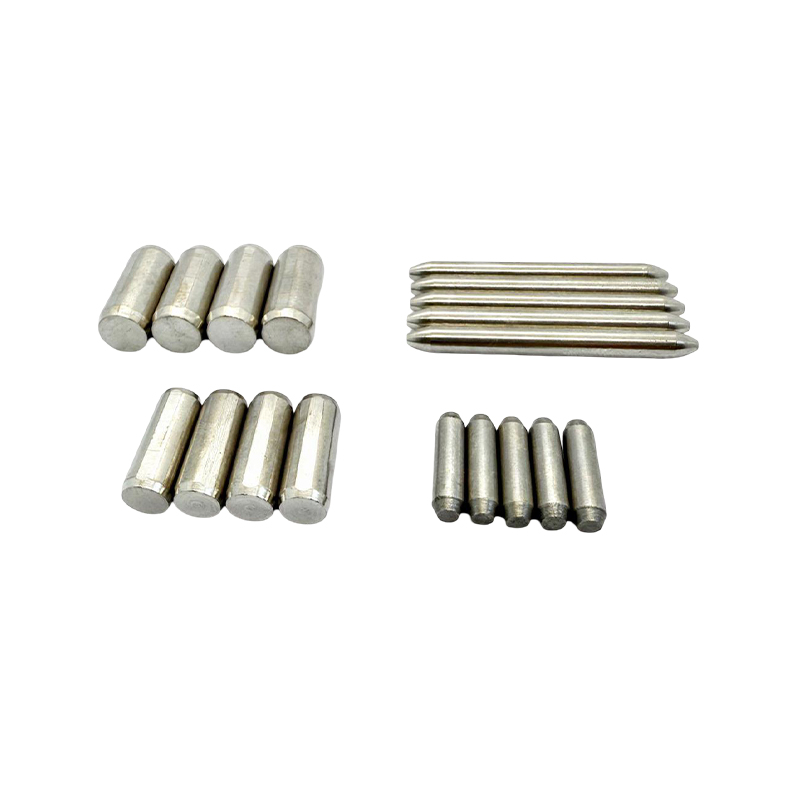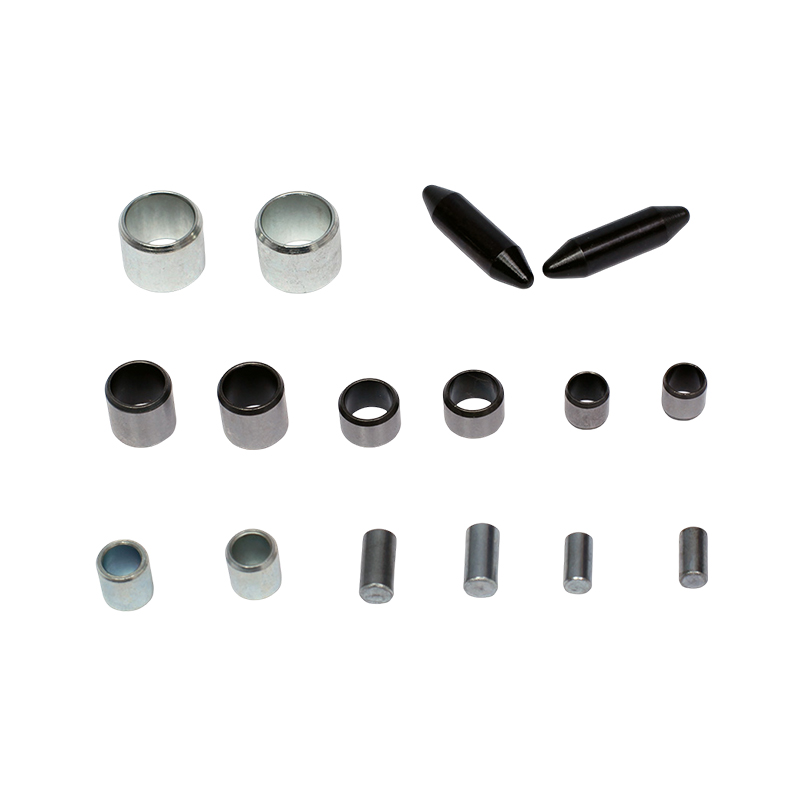
Precision "Little Guards" In The Mechanical World - Pin Parts
Publish Time: 2025-09-23
In complex and precise machinery, every part plays an indispensable role, and pin parts (locating pins, parallel pins, bushings) are like "little guards" who silently guard. Although they are small in size, they play a key role in many fields with their unique functions, diverse material selection, fine processing technology, strict quality control and continuous design optimization.I. Core functions: the precise cornerstone of mechanical assembly(1) Locating pins and parallel pins: guardians of precise positioningLocating pins, especially cylindrical pins, are the "positioning masters" in the mechanical assembly process. In automobile manufacturing, from the precise assembly of the engine to the accurate splicing of the car body, locating pins can ensure that each part fits tightly in the correct position, preventing the parts from moving or rotating during subsequent operation, and ensuring the overall performance and safety of the car. The aerospace field has extremely high requirements for precision. In the assembly of aircraft parts, locating pins can be accurate to the micron level to ensure the stable operation of the aircraft at high speed and in complex environments. The field of industrial equipment is also inseparable from locating pins. In mold manufacturing, it ensures that the various components of the mold are accurately aligned to produce high-quality products; in fixtures, locating pins can quickly and accurately fix the workpiece, improving processing efficiency; in the precision assembly of gearboxes, locating pins ensure the precise position of gears and other components, making the gearbox run smoothly and shifting smoothly. Parallel pins also have similar functions. In specific mechanical structures, they can provide parallel positioning references for parts, further enhancing the accuracy and stability of assembly.(2) Bushings: Lubricating messengers that reduce frictionBushings are the "lubricating messengers" during the movement of mechanical parts. In the engine, the piston reciprocates at high speed in the cylinder. The bushing is installed between the piston and the cylinder, which can effectively reduce the friction between the two, reduce energy loss, and extend the service life of the engine. In the hydraulic system, bushings are also needed between the piston and the cylinder body of various hydraulic cylinders to support and reduce friction to ensure the stable operation of the hydraulic system. The rotation of gears and shafts in the gearbox are inseparable from the support and friction reduction of bushings. Bushings are like a silent "hero behind the scenes" that ensures that mechanical parts can operate smoothly and efficiently.II. Material selection: a wise choice to adapt to different environments(1) Carbon steel and alloy steel: a strong backing for high-load applicationsCarbon steel and alloy steels such as 45 steel and 40Cr have high strength and wear resistance and are the preferred materials for high-load applications. In the connection between the crankshaft and the connecting rod of the automobile engine, the locating pin needs to withstand huge shear force and the impact force of reciprocating motion. After heat treatment (quenching and tempering), the hardness and toughness of 45 steel are significantly improved, which can meet the requirements of such high-load work. In heavy machinery of industrial equipment, such as the mold locating pins of large punching machines, 40Cr steel, with its excellent performance, ensures that the mold can maintain precise positioning under long-term impact and vibration. The heat treatment process is like a "strengthening training" for steel. Quenching greatly increases the surface hardness of the steel, while tempering eliminates the internal stress generated by quenching, improves the toughness of the steel, and makes it less likely to break when subjected to high loads.(2) Stainless steel: a loyal guardian in corrosive environments304, 316 and other stainless steels have excellent corrosion resistance and are ideal choices for corrosive environments in the chemical, food, and medical industries. In chemical production, many media are highly corrosive, such as acids and alkalis. Dowel pins and bushings made of stainless steel can resist the erosion of these corrosive media and ensure the normal operation of the equipment. The food processing industry has extremely high hygiene requirements. Stainless steel materials are not only corrosion-resistant, but also easy to clean and disinfect, which can ensure the safety and quality of food. In the medical field, precision components of various medical devices also require the use of stainless steel pin parts to prevent rust and corrosion from harming the human body.III. Processing Technology: A Journey into the Art of Precision Manufacturing(1) Turning and Milling: Pioneers of High-Precision ProcessingTurning and milling are common methods for high-precision processing of outer diameters, inner holes, and end faces using CNC machine tools. CNC machine tools are like skilled craftsmen who can precisely control the movement of the tool according to pre-set programs to achieve high-precision processing of pin parts. When processing the outer diameter of the locating pin, the CNC lathe can ensure that the accuracy of the outer diameter dimension reaches an extremely high level, providing an accurate reference for subsequent assembly. Milling can be used to process the end face and special shapes of the locating pin, such as the parallel surface of the parallel pin, to ensure that all parts of the part meet the design requirements.(2) Grinding: The magic of improving surface qualityExternal cylindrical grinding is a key process for improving the dimensional accuracy and surface quality of pin parts. After grinding, the outer diameter accuracy of the locating pin can be further improved, and the surface roughness can reach below Ra0.8, which is like a fine "grinding and polishing" of the surface of the part, making the surface of the part smoother and flatter, reducing friction and wear, and increasing the service life of the part.(3) Cold heading and hot forging: efficient ways of mass productionCold heading is suitable for mass production of standard parts (such as cylindrical pins). It uses a press to extrude metal blanks at room temperature, with the advantages of high production efficiency, high material utilization rate, and good part precision. In large-scale production fields such as automobile manufacturing, the cold heading process can quickly produce a large number of locating pins that meet standards to meet production needs. Hot forging is to forge metal blanks at high temperatures, so that the metal has good plasticity and fluidity, and can produce pin parts with complex shapes and high strength, such as special locating pins in some large machinery.(4) Heat treatment and surface treatment: dual guarantees for performance improvementThe heat treatment process is an important means to improve the performance of pin parts. Quenching and tempering can improve the hardness and toughness of parts, making them less likely to deform and break when subjected to high loads. Carburizing and nitriding can improve the wear resistance of the parts surface and extend the service life of the parts. The galvanizing process in the surface treatment can provide anti-corrosion protection for parts, preventing them from rusting in a humid environment, and is suitable for some occasions with high anti-corrosion requirements.IV. Quality Control: Strictly Controlled Precision Line(1) Dimensional Accuracy: Precise Control Between MillimetersThe dimensional accuracy requirements of pin parts are extremely high, with the outer diameter tolerance controlled at ±0.004mm, the length tolerance controlled at ±0.3mm, and the cylindricity ≤0.01mm. During the production process, advanced measuring instruments and strict testing processes are used to accurately measure the dimensions of each part to ensure that the dimensions of the parts meet the design requirements. Only parts with dimensional accuracy that meets the standard can achieve precise positioning and matching in mechanical assembly to ensure the overall performance of the machine.(2) Surface Quality: The Pursuit of Smooth and Flawless QualitySurface quality is also one of the important indicators for measuring the quality of pin parts. The surface roughness of the parts must be less than Ra0.8, and there must be no defects such as cracks, burrs, and scratches. These defects not only affect the appearance of the parts, but also reduce the surface quality and performance of the parts, increase friction and wear, and even lead to early failure of the parts. Therefore, during the processing, the process parameters must be strictly controlled, and appropriate processing methods and tools must be used to ensure that the surface quality of the parts meets the requirements.(3) Mechanical properties and environmental adaptability: a reliable guarantee for comprehensive testingThe mechanical properties test mainly evaluates the hardness and strength of the parts through hardness testing to ensure that the parts can withstand the workload required by the design. The salt spray test in the environmental adaptability test is used to test the corrosion resistance of the parts in a corrosive environment, simulate the harsh environment that the parts may encounter in actual use, discover potential quality problems in advance, and ensure that the parts can operate reliably in various environments.V. Design optimization: an innovative path to performance improvementPrecision machining is one of the important directions of design optimization. The use of high-precision machining equipment such as CNC machine tools and grinders can further improve the machining accuracy and surface quality of pin parts, and achieve more complex and more precise part designs. With the continuous advancement of technology, new materials and processing technologies, such as new composite materials and 3D printing, will be explored in the future. These will bring more possibilities to the design and manufacturing of pin components, further enhancing their performance and application range.Pin components (locating pins, parallel pins, and bushings) have become an indispensable component of the mechanical world due to their precise functions, diverse materials, sophisticated processing, strict quality control, and continuous design optimization. Like silent and dedicated "little guards," they play a critical role in their respective positions, ensuring the stable operation and efficient production of mechanical equipment. As the machinery industry continues to develop, pin components will also continue to innovate and advance, making greater contributions to the advancement of mechanical technology.




